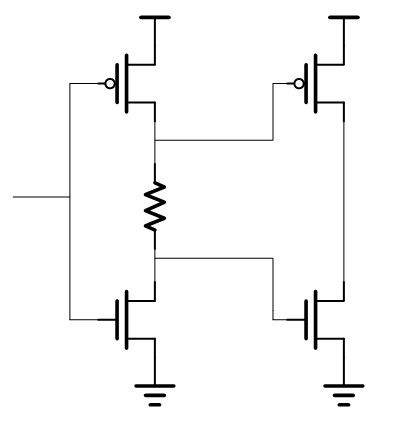chang830
Full Member level 5
Hi,
I have a question on the attached cicruit.
PLs. take a look at it. It is a simple inveretr at the output, the resistor in the circuit puzzled me. Would anyone can see what's the function of this resistor?
Is it for ESD function?
Thanks
I have a question on the attached cicruit.
PLs. take a look at it. It is a simple inveretr at the output, the resistor in the circuit puzzled me. Would anyone can see what's the function of this resistor?
Is it for ESD function?
Thanks
